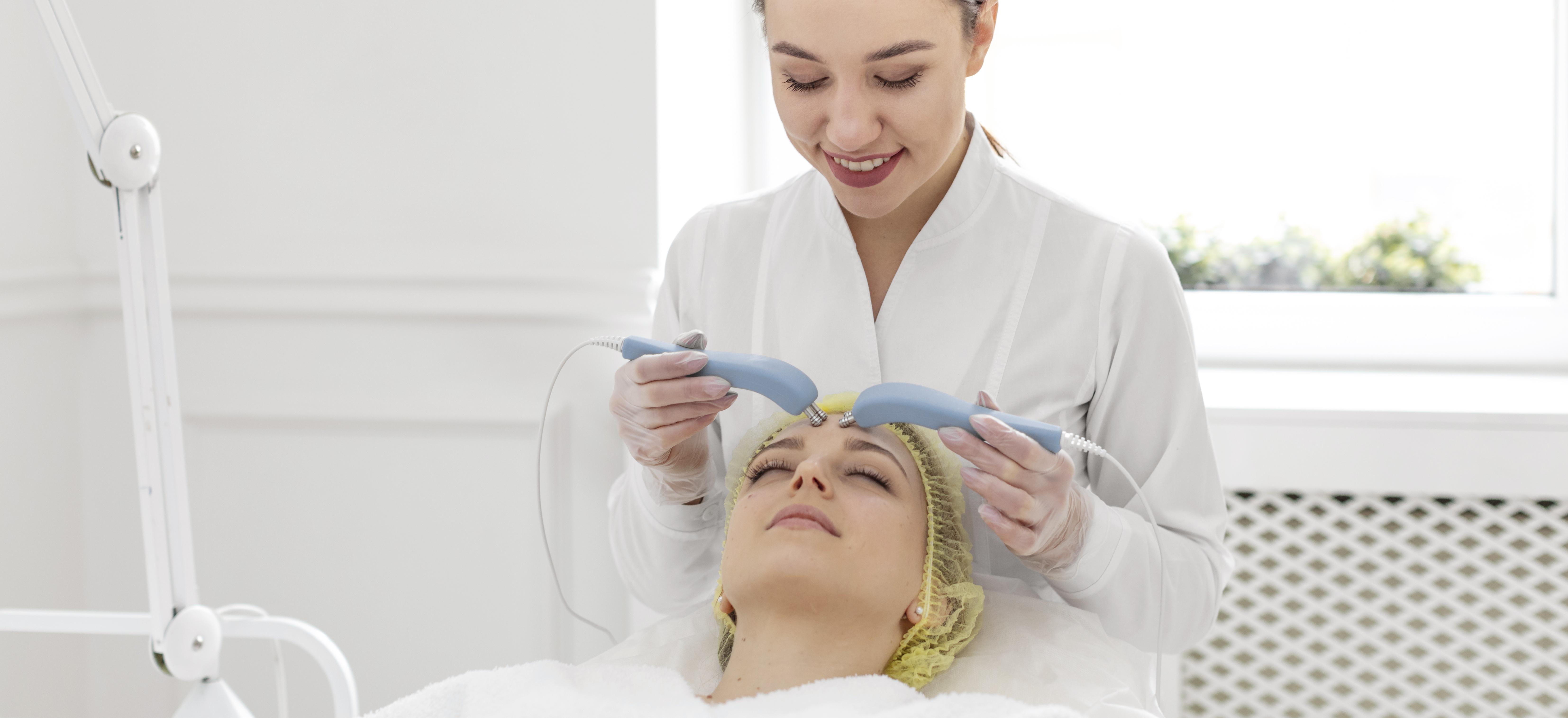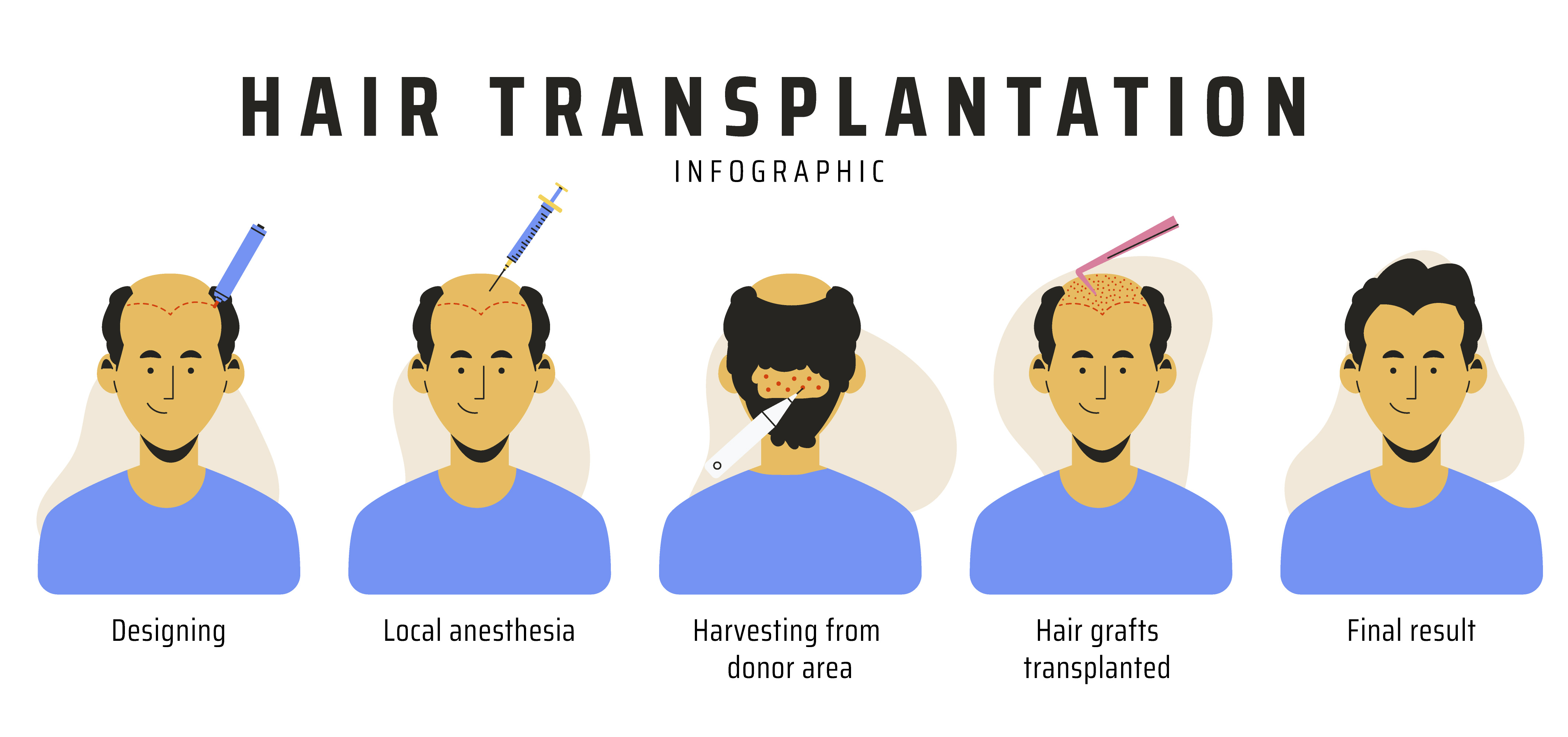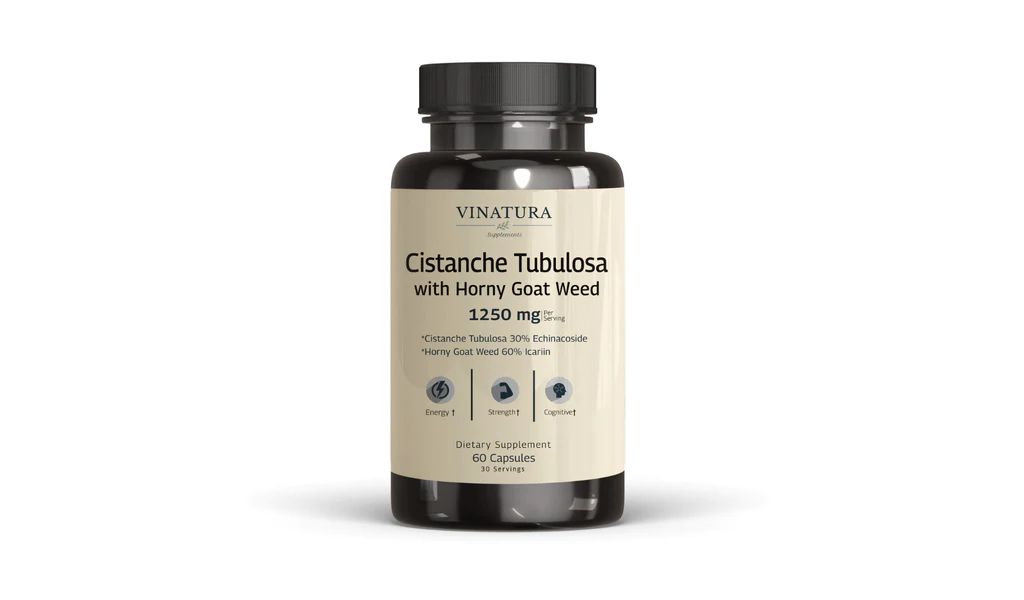
How Doctor Answering Services are Helping Transform Healthcare Administration
As the healthcare industry is rapidly evolving, the increasing incorporation of live doctor answering services is mitigating staff workload to a huge extent. Patient calls and emergency dispatches can overwhelm the healthcare staff, thus affecting their efficiency. The top doctor answering service can act as a virtual extension of any healthcare facility or hospital. These operations are available 24/7 and handle each call with precision and utmost care, thus ensuring a seamless communication experience for your staff and patients. Let us understand the critical role medical answering services play in the healthcare sector.
The top answering services guarantees prompt response and accurate message delivery. This provides your staff with the support they need to focus on their core responsibilities. They have a secure and confidential message-handling system that upholds the highest standards of data privacy, thus offering peace of mind to you and your patients. Integrating this service into your healthcare facility can transform your administrative workflow by improving patient interaction and overall quality of care.
Handling the Administrative Tasks in Healthcare
Healthcare administration is a complex task that often burdens teh medical clinic staff with a huge workload. The constant ringing phones, administrative duties, and need for patient care coordination can lead to burnout among the staff, which can affect the overall efficiency of your healthcare facility. But medical answering services can transform the way healthcare administration operates.
They handle influx calls that allow your clinic staff to focus on providing quality healthcare. They act as a virtual receptionist who are available 24/7 and ensure that no call goes unanswered. Your staff will miss no patient query, and no administrative task will be overlooked. This will help streamline the workflow and also enhance the patient experience, thus fostering a sense of trust and reliability.

Furthermore, the role of a medical answering service is not just limited to administrative assistance as they also ensure secure and confidential communication by adhering to HIPAA regulations and keeping the data of patients safe.
Answering Services is the Right Solution for Overworked Staff
The staff of any healthcare facility often struggles with an overwhelming number of calls. This leads to increased stress and decreased efficiency. The overwhelmed medical facility staff often juggles numerous responsibilities. However, a live answering service can offer a compelling solution to this. These services can be a perfect solution for overburdened staff by ensuring that every call is addressed promptly and professionally. This will alleviate the pressure on the staff and enhance the patient experience.
Doctor answering services have the ability to seamlessly integrate into existing workflows, hence providing respite to your overburdened healthcare workers. Service can become an invaluable extension of your clinic can manage call volume and allow staff to focus on critical in-person patient care. The integration of answering services will show your commitment to staff well-being and patient satisfaction.
Innovative Solution for Answering Services in Healthcare Administration
The healthcare sector is rapidly evolving, demanding a dynamic approach to managing patient calls and other administrative tasks. Live answering services can offer a robust solution to the everyday challenges faced by healthcare staff and also enhance the effectiveness of your healthcare administration.

They ensure that every patient interaction is handled with the utmost professionalism and empathy. Integrating medical answering services in your healthcare facility will represent your forward-thinking approach by offering a blend of technology and personalized care. It embodies innovation by providing a sophisticated yet user-friendly solution for patient communication.
Doctor answering services can act as a critical tool in modernizing your healthcare administration by bridging the gap between technology and the human touch. Their 24/7 ability ensures that no call goes unanswered, no medical emergency goes unnoticed, and no patient query goes unaddressed.
Most medical answering systems have HIPAA-compliant message delivery systems. This ensures that all information, patient records, and medical data remain confidential and secure. They provide a seamless communication experience that can transform the way your clinic operates and also allow your staff to focus on their core responsibilities. This helps improve the overall quality of patient care.
One critical aspect of healthcare administration is transforming healthcare workflows. Integrating medical answering services into your healthcare workflow can alleviate staff workload. These services could be your strategic partner that works around the clock to ensure that every call is addressed promptly and professionally. It can be your catalyst for change by transforming traditional healthcare workflow into a modern, efficient, and streamlined one.
To Wind Up
This services can signify a transformative shift in handling patient phone calls. Thus freeing up valuable time for your medical staff so that they can focus on direct patient care. They signified an evolution in patient management and can efficiently align with the goals of improved care and optimized administrative processes. It can be a transformative element in healthcare workflow more than just a support mechanism for your healthcare facility.

When Do You Start Losing Weight on Semaglutide?
Allure Esthetic Plastic Surgery provides prescription weight loss medications including semaglutide. The experts at Allure Esthetic customize your treatment plan and monitor your medical weight loss journey.
Weight loss is a constant—and often lifelong struggle—for many people. While lifestyle is important for weight loss and maintaining weight, many other factors contribute to a person’s body weight including genetics, medical conditions, medications they take, past injuries or surgeries, and a person’s environment. Therefore, sometimes medical weight loss options can be life-changing for people who have struggled with their weight and who may have weight-related health conditions.
Understanding The Science Behind Semaglutide
Semaglutide—and other medications in the same class of medications—are the newest medical weight loss option available in the United States. Known as glucagon-like peptide-1 agonists, or GLP-1s, these medications mimic the effects of the GLP-1 hormone. This hormone is found in specialized cells in the gastrointestinal tract and pancreas. It helps to regulate appetite and digestion. It generally releases soon after you begin eating, but its effects do not last long.
By mimicking the effects of the GLP-1 hormone, semaglutide can help patients feel fuller longer and sooner as well as slow gastric emptying. This can help improve overall metabolic health, lower blood sugar, and promote weight loss. Additionally, because semaglutide is a synthetic version of the hormone, it does not break down in the body as quickly as naturally occurring GLP-1. This extends the effects of the hormone.
Time It Takes To See Results
The amount of time it takes for a patient to visibly see results from semaglutide injections will vary. The amount of weight the patient needs or aims to lose, whether they diet and exercise, and how their body biologically responds to the medication all impact how quickly weight loss becomes noticeable.
Generally speaking, patients usually begin seeing the most dramatic effects within six months. However, some patients may notice weight loss—such as reduced clothing sizes—within a couple of months. If a patient is only slightly overweight, the weight loss will become apparent sooner than for those who are significantly overweight.
Patients will also see better results if they make an effort to improve their diet and exercise routine. While weight loss may still occur with little to no changes made, it will happen much slower and the overall results will not be as good. Even small changes can make a difference in semaglutide weight loss results. Also, it gives patients the luxury of changing their lifestyle gradually without seeing major setbacks from the natural progression of making a lifestyle change.
How Long Do You Stay On Semaglutide For Weight Loss?
Semaglutide is designed to be a medication that a patient takes long term. However, the amount of time you stay on it will depend. Though, it is recommended that weight loss patients stay on semaglutide for at least six months. When choosing to discontinue semaglutide, it is safe to immediately stop, but your provider may recommend slowly reducing the dose to limit rebound weight loss.
Other GLP-1 Medical Weight Loss Options
Other GLP-1 agonists are also FDA-approved or widely used for weight loss. Below are a few examples of these medication alternatives to injectable semaglutide.
Oral Semaglutide
Most semaglutide for weight loss comes in the injectable form, but a pill form does exist. Instead of injecting the medication weekly, patients take a daily tablet. This may work better for some people’s lifestyles or preferences. Allure Esthetic can prescribe injectable and oral forms of semaglutide.
Tirzepatide
Tirzepatide is another GLP-1 agonist, but it also targets the GIP hormone. This dual-hormal approach can provide better results for some patients. However, it can also come with worsened side effects for others. If a patient does not respond well or do not see the expected results from semaglutide, their provider may recommend tirzepatide instead.
Liraglutide
Liraglutide is another GLP-1 agonist option. It has been around longest and is effective, but semaglutide and tirzepatide have been shown to be likely to be more effective for weight loss. With that said, this medication is still an option and may work for some people looking into medical weight loss.
Starting Your Medical Weight Loss Journey At Allure Esthetic
Allure Esthetic Plastic Surgery sees medical weight loss patients in the office and virtually. The initial consultation will ensure that you are a good candidate for semaglutide weight loss and can administer the first dose if you are in the office. From there, patients can have compounded semaglutide delivered to their home and administer it themselves. If convenient, patients can also come into the office weekly for their injection. Regardless of the administration approach taken, patients will have follow-up appointments to gauge their results and response to the medication
To get started on your medical weight loss journey, Patients can also reach out online via chat, contact form, and Price Simulator.

What Is a HIPAA Violation Lawyer?
Running any type of healthcare business in the state is incredibly difficult. Business owners must not only preserve their bottom line and ensure the highest levels of patient care, but they must also comply with a wide range of complex state and federal regulations. HIPAA Violation can be crippling for a business.
But you’re not alone, because attorneys for HIPAA violations can provide comprehensive legal support for your healthcare business in various ways. So, if you have been accused of violating HIPAA/HITECH, your attorney can help prove that you upheld your legal obligations in good faith and potentially assist you in minimizing any assigned penalties. Your legal team can also provide guidance for minimizing the chance of future violations protecting your business.
But what exactly does a HIPAA violation lawyer do, and why might their expertise be crucial in today’s complex healthcare landscape? Let’s talk about how important it is for these lawyers to keep patient information safe and make sure that privacy laws are followed.
Role and Responsibilities of HIPAA Violation Lawyer
In HIPAA violation cases, a HIPAA violation lawyer takes on the responsibility of protecting their rights and advocating for fair treatment. Providing legal support to those who had their protected health information breached and building a strong case for them.
They will work closely with you to gather evidence, assess the extent of the violation, and determine the appropriate course of action. This may involve negotiating with healthcare providers, filing complaints with the Department of Health and Human Services, or pursuing legal action in court. Your goal is to hold accountable those responsible for the HIPAA violation and seek justice for the harm caused to your clients.
You’ll also educate them about their rights under HIPAA and guide them through the legal process. By providing expert legal representation and support, ensure that individuals affected by HIPAA violations receive the compensation and resolution they deserve.
Legal Expertise and Specialization
A HIPAA violation lawyer needs a deep understanding of the Health Insurance Portability and Accountability Act (HIPAA) and other relevant laws to provide the best defense or representation for clients facing allegations of breaching patient privacy rights.
Specializing in this area allows lawyers to stay updated on the latest developments in healthcare law and offer the most relevant and effective advice to their clients. This specialization in HIPAA violation cases enables lawyers to anticipate potential legal challenges, strategize defense tactics, and negotiate settlements from a position of strength.
Case Evaluation and Investigation for HIPAA Violation Lawyer
Conduct a thorough evaluation and investigation of the case to gather essential evidence and insights essential for crafting a strong legal strategy. Start by examining all relevant documents, such as medical records, communication logs, and any other pertinent information that could shed light on the alleged HIPAA violation.
Interview key witnesses to get their accounts of what occurred and to uncover any additional details that may support your case. Analyze the facts meticulously, looking for any discrepancies or inconsistencies that could be used to your advantage.
Utilize your expertise to assess the severity of the HIPAA violation and determine the potential consequences for your client. Identify any mitigating factors that could help reduce the penalties or liabilities faced by the accused party. Keep detailed notes of your findings and organize them in a clear and concise manner to facilitate the development of a solid legal defense.
Patient Privacy Laws Representation
Once you have gathered crucial evidence and insights from the case evaluation and investigation phases, it’s time to focus on representing your client in matters concerning patient privacy laws. As a HIPAA violation lawyer, your role in patient privacy law representation is crucial in ensuring that your client’s rights are protected and that any violations are addressed appropriately.
Your tasks may include analyzing the specific details of the case to determine if there’s been a breach of patient confidentiality, reviewing relevant medical records and communications, and assessing the potential impact on the affected individuals. You’ll also work on developing a legal strategy to address the violation, which may involve negotiating with the relevant parties, filing complaints with regulatory bodies, or pursuing legal action in court.
Throughout the patient privacy law representation process, your expertise in HIPAA regulations and other relevant laws will be essential in guiding your client and advocating for their rights. By providing knowledgeable and strategic legal representation, you can help your client navigate the complexities of patient privacy laws and seek appropriate remedies for any violations that have occurred.
Compliance Guidance and Risk Mitigation
As you deal with patient privacy law representation, ensuring compliance guidance and implementing risk mitigation strategies become paramount to safeguarding your client’s interests. Staying informed about the ever-evolving landscape of healthcare regulations is crucial to proactively addressing potential HIPAA violations. Compliance guidance involves interpreting complex laws, staying updated on changes, and ensuring that your client’s practices align with HIPAA requirements.
Risk mitigation strategies are essential in minimizing the chances of non-compliance and potential breaches. Conducting regular risk assessments, implementing robust security measures, and providing comprehensive staff training are key components of effective risk mitigation. By identifying and addressing vulnerabilities within your client’s operations, you can help them avoid costly penalties and reputational damage associated with HIPAA violations.
Collaborating with compliance experts and staying vigilant in monitoring adherence to HIPAA guidelines can significantly reduce the risks your clients face. By prioritizing compliance guidance and risk mitigation, you demonstrate your commitment to protecting patient privacy and upholding the integrity of healthcare practices.
Conclusion
If you find yourself facing a HIPAA violation, a HIPAA violation lawyer can provide the expertise and guidance needed to navigate the legal complexities of healthcare privacy laws. They’ll evaluate your case, investigate any potential violations, and work to protect your rights while ensuring compliance with HIPAA regulations. Don’t hesitate to contact a HIPAA violation lawyer to help mitigate risks and protect patient privacy.

A Guide to Mesothelioma Compensation for Family Members
Asbestos exposure, even decades ago, continues to impact a lot of families today. Many families, even family members who are secondary exposed to its fibers, are now grappling with the devastating effects of mesothelioma due to past exposure to asbestos. Regardless of how you or your family were exposed, you may be eligible for mesothelioma compensation for family members.
Affecting mostly men, about 80% of mesothelioma cases occur in males working in industries that heavily use asbestos, like construction, shipbuilding, and manufacturing. Despite the advancements in treatment, curing the disease remains challenging.
In this article, we’ll cover the various types of compensation available, eligibility criteria, and legal options to assist you on this journey. Learn how to secure rightful compensation for your loved ones affected by mesothelioma and to secure themselves financially.
Understanding Mesothelioma Compensation
The legal system has compensation avenues for someone diagnosed with mesothelioma. To help ease the financial burden that comes with medical bills, lost wages, and emotional distress. Typically, compensation is obtained through settlements with asbestos trust funds, lawsuits against asbestos companies, or veterans’ benefits for those exposed during military service.
To begin the process, collect all relevant medical records, employment history, and any documentation linking the illness to asbestos exposure. Consulting with an experienced mesothelioma attorney is highly recommended. To handle the complex legal procedures and maximize the compensation you may be entitled to.
Types of Compensation Available
Asbestos trust funds, lawsuits, settlements, and veterans’ benefits are ways that can help alleviate the financial burdens associated with mesothelioma diagnosis in affected families.
Asbestos Trust Funds:
These were set up by bankrupt asbestos companies to compensate for mesothelioma victims. These funds can help cover medical expenses, lost wages, and other related costs. A mesothelioma lawyer can assist you in determining if your family member qualifies for compensation from these trusts.
Lawsuits or Settlements:
Lawsuits against asbestos manufacturers or employers where exposure occurred can also result in compensation through settlements or jury awards.
Veteran’s Benefits:
As for veterans who were exposed to asbestos during their service, they may be eligible for benefits through the Department of Veterans Affairs. These benefits can assist with medical care, disability compensation, and other support services.
Workers’ Compensation:
You may be eligible for benefits through workers’ compensation if your loved one was exposed to asbestos in the workplace. These benefits can help cover medical expenses and lost wages.
Eligibility Criteria for Compensation
To be eligible for mesothelioma compensation, specific criteria must be met regarding the circumstances of asbestos exposure and related diagnosis.
- You must have a confirmed diagnosis of mesothelioma by a qualified medical professional. This diagnosis establishes a direct link between the illness and asbestos exposure.
- You need to have evidence of significant exposure to asbestos, either through occupational exposure or secondhand exposure from a family member working with asbestos. Documentation such as work history records, witness statements, and medical reports can help support your claim for compensation.
There are usually time limits for filing a claim, so act immediately once the diagnosis is confirmed. You can seek the assistance of legal professionals experienced in handling such cases to help with the complexities of the process.
Filing a Mesothelioma Compensation Claim
Once you’ve confirmed your eligibility for mesothelioma compensation based on the criteria discussed earlier. Next step is to start the process by filing a claim. Filing a mesothelioma compensation claim typically involves gathering all relevant medical records, employment history documents, and any other evidence that supports your case. You have to provide as much information as possible to strengthen your claim.
To start the filing process, you’ll need to reach out to a mesothelioma lawyer who specializes in asbestos litigation. These lawyers have the expertise to guide you through the legal procedures and have your claim handled efficiently. They’ll assist you in preparing all the necessary paperwork and documentation required to file a successful claim.
Once your claim is filed, the legal team will work on your behalf to negotiate a settlement or take your case to trial if needed. Throughout this process, mesothelioma lawyer will keep you informed about the progress of your claim and provide support every step of the way.
Conclusion
If your loved one has been diagnosed with mesothelioma, there are compensation options available to you as a family member. And seeking compensation can ease the financial burden and provide some peace of mind for you and your family.
Eligibility criteria, and legal options for filing a claim, you can help your family receive the much-needed financial support during this difficult time.

7 Surprising Benefits Of Facelift Surgery You Didn’t Know
We all deal with facial imperfections at some point in our lives. For some of us, this comes early in the form of acne. Thankfully, breakouts during our teenage years are manageable and don’t usually last more than a few years. Still, they can leave us with a feeling of hyper-awareness about how we look–even decades later.
Even if you escaped your teenage hormone influx with few facial breakouts, you might now deal with wrinkles or sagging skin. Facelifts are popular all over the world for helping with loose skin and making people look younger. But there are other benefits to this surgery that may not have crossed your mind. Let’s talk about facelifts and their seven surprising benefits.
Facelift Surgery: 7 Surprising Benefits
When people talk about someone having “work done,” a couple of surgeries immediately pop into our heads. Breast augmentation–or a boob job–is usually top of this list. Next might be a nose job (rhinoplasty). What a lot of people mean when they imply that someone had plastic surgery is that the person had a facelift. Today’s facelift looks a lot different from past surgeries, though. It’s a lot harder to tell if someone has “had work done” or if they’ve just been on a restful two-week vacation. While the subtlety of surgery is definitely a plus, what other benefits should you consider?
1. Provides Anti-Aging Effects For Both Women And Men
We know what you’re thinking–a two-week vacation would be great! De-stressing is never a bad thing. Realistically, though, we know you can’t always just drop everything and fly to a tropical island for fun in the sun. Plus, as relaxing as it is to get away from the strains of your daily grind, it probably won’t reverse signs of aging; however, a facelift can.
The number one benefit that surprises the most people is that both men and women have facelifts. It’s no longer a taboo topic or a vain act if you have plastic surgery. In fact, more men are letting themselves experience the upsides of these procedures. And why shouldn’t they? Both genders can–and often do–have signs of aging, like wrinkles or sagging skin on their faces and necks. What better way to help make these signs more subtle or erase them altogether than to have a one-and-done procedure that leaves them feeling and looking youthful and confident?
2. Reduces Sagging And Tightens Facial Skin
Okay, this isn’t exactly a surprising benefit, but it’s too good to forget! Your environment can damage your skin–whether that’s from sunlight, genetics, stress, or gravity. Whatever has led you to your surgeon, you can be sure that facelift surgery will do what it does best–take away sagging skin and tighten your facial features so they’re smooth and wrinkle-free.
3. Shorter Recovery Period
You won’t have to spend weeks hiding if you have a facelift. The only reason downtime is important is so you can heal, not because you need to feel ashamed of your facelift. After a couple of peaceful weeks at home (think of it as a staycation), you can start working again–and showing off the younger-looking you.
4. Open To All Ages
Facelifts aren’t only for people in their 40s or above. Maybe you’re in your 20s or 30s and have a genetic condition that causes your skin to sag, or you’ve lost a good amount of weight, and this change left you with a drooping face. Whatever the case, you can have facelift surgery if you’re in your 20s or 80s–as long as your surgeon says you’re healthy enough, you’re good to go.
5. No Visible Scarring From Surgery
You won’t have to worry about scarring from your facelift if you choose an experienced surgeon. Your surgeon will make small, subtle incisions that heal and blend into your skin. The incisions are near your ears and either follow the front curve of your ear along your face or are behind your ear and lobe, hidden in your hairline.
6. Solo Or Combination Procedure
You want to fix the wrinkles on your face, but there’s another thing you’d like to have done. Maybe you’re thinking about changing the shape of your nose or getting rid of fatty tissue around your eyes. You can combine a facelift and a second surgery, so you’ll only have to deal with one operation and one recovery period.
7. Long-Term Results That Create A Naturally Youthful Look
The most surprising benefit of all is the natural look facelifts produce. This wasn’t always the case, but the modern version of the surgery is more about making small changes to help you look younger and refreshed without making your skin look unnaturally tight.
Skincare products and moisturizing creams say they can lift and firm your skin. Some of these products do work–and they work well–but only for as long as you keep using them. Facelift surgery is your best bet for a long-lasting outcome. You might need revision surgery after ten years, but most patients don’t need another facelift for fifteen to twenty years–if they even need one at all.
Your ticket to Naturally Younger Look
You may be surprised by these seven facelift benefits. No matter your age or gender, you can have tighter, smoother facial skin. Your recovery time is short–and your incisions well-hidden– meaning you can go back to work after as little as two weeks. You can plan for your facelift to be a solo operation or pair it with another cosmetic surgery. If subtle enhancements that lead to great results are your thing, facelift surgery may be your ticket to a naturally younger look.

Understanding Breast Implant Surgery: 7 Key Inquiries Clarified For Real Patients
Breast implant surgery, commonly known as breast augmentation, has been one of the top five cosmetic procedures in the world for the past two decades. Since then, breast implants have become some of the most studied medical devices in history. With increased safety and efficacy, breast implants remain poised to cling to their title in the top five for many years.
Diverse Options
There are many options when it comes to breast augmentation. Implants are available in two main types: saline and silicone. These types both contain an outer shell made from silicone. The difference is in the filling. Saline implants have a core of sterile salt water, while silicone implants have a gel-like substance made from silicone.
A second silicone-filled implant option is the gummy bear implant. These contain more cohesive silicone gel that holds its form. Patients who desire a natural look and feel frequently request gummy bear implants.
The traditional shape of breast implants is round; however, gummy bear implants offer a variation to this–anatomical. These tear-shaped implants resemble the natural breast shape–narrow at the top, expanding in the middle, and wide at the base.
Ideal Candidates
Perhaps one factor that contributes to the popularity of breast augmentation is its function as both a cosmetic and reconstructive procedure. Candidates for breast implants are those who wish to add more volume to their breasts. Patients with no underlying conditions are well-suited for this procedure. Women who have undergone a mastectomy may choose breast implant surgery to reconstruct their breasts and accomplish a more feminine figure.
Expected Benefits
Breast Augmentation Seattle offers many benefits to patients who elect to undergo the procedure. The primary benefit is the new volume the implants create. However, a close second to this benefit is the confidence boost this surgery provides. Patients who have struggled with feeling insecure in their bodies can achieve the level of self-confidence they have always wanted when they choose to get implants. Whether their concern is a small, sagging, or uneven chest, patients can consult with their surgeon, customize their breast implant surgery, and achieve stunning, symmetrical results.
Potential Risks
While breast implant surgery is generally a safe procedure, there are a few rare side effects–from surgery and the implants themselves. The best way to avoid adverse effects is to entrust your care to a qualified surgeon. Dr. Javad Sajan is known for providing the best breast augmentation Seattle offers.
One concern among patients is the potential rupture of breast implants. However, this complication is rare. If rupture occurs, saline implants deflate, and the body absorbs the salt water. Silicone implants contain highly cohesive gel, making them less likely to leak in the event of rupture.
All patients will develop mild scar tissue around their implants. Capsular contraction is a condition that occurs when the scar tissue that forms naturally around the breast implants begins to contract, squeezing the implant. Most cases of capsular contraction are mild and don’t need additional treatment. However, severe cases that cause the patient pain or begin to affect the appearance of the breasts may require the removal of the implants.
The Road To Recovery
The first three to five days after breast augmentation are typically the roughest. Patients may have increased levels of pain and discomfort during this time. Your surgeon will prescribe you medicines to ease these symptoms during your recovery. Once a week has passed, the discomfort should improve. Massaging your breasts and applying ice to your chest will help diminish swelling and bruising.
Three to four weeks post-operation, you can return to most activities, including light exercise, if your surgeon approves. After four to six weeks, most patients are completely recovered and can enjoy the results of their surgery.
Realistic Expectations
During your consultation and preoperative appointments, you and your surgeon will discuss the possibility of your results. Use this opportunity to tell your surgeon what you hope to achieve with breast implants. They will help you set realistic expectations for your goals.
It’s important to keep in mind that everyone heals differently. People have unique body compositions and muscle structures. Some patients will recover quickly and see results sooner. Others may take longer to heal and may not be able to appreciate their results as early. If you keep this in mind and have realistic expectations about the outcome of your surgery, you are likely to be satisfied with your results.
Long-Term Care
While breast implants are long-lasting, they will eventually require replacement. Most implants will last as long as ten years. Proper long-term care and maintenance of breast implants Seattle ensures that the implants are less likely to rupture or leak during this time. Surgeons recommend frequent scans to check on the placement and quality of the implants. Follow-up appointments with your plastic surgeon and primary healthcare provider are excellent ways to ensure successful breast augmentation results.
Conclusion
Women seeking reconstructive surgery or those wanting to add volume and femininity to their appearance consistently choose breast implants to accomplish these results. Patients have various choices in the type and shape of implants they want. Some may feel more comfortable with saline or silicone implants based on the results each can provide.
Patients recover at various rates and should maintain a realistic idea of what results they may see after surgery. Long-term care and maintenance, such as scans and post-operative appointments, are crucial for patient health and good surgical outcomes.

Picosure Laser Revolution: A Leap Forward in Skin Aesthetics
In the ever-evolving landscape of cosmetic treatments, the Picosure Laser has emerged as a revolutionary technology, offering a leap forward in the realm of skin aesthetics. With its advanced capabilities and impressive results, Picosure Laser treatment has become a popular choice for individuals seeking to rejuvenate their skin and address various dermatological concerns.
Understanding Picosure Laser Treatment
Picosure Laser treatment is a cutting-edge cosmetic procedure that utilizes advanced picosecond technology to target various skin imperfections. Unlike traditional lasers that operate in nanoseconds, the Picosure Laser delivers ultra-short pulses in picoseconds, resulting in enhanced precision and efficacy.
How Picosure Laser Works
The mechanism behind Picosure Laser treatment lies in its ability to harness the power of focused energy pulses to target specific pigmentation and imperfections within the skin. The ultra-short pulses generated by the laser break down pigment particles and stimulate collagen production, leading to smoother, firmer, and more radiant skin.
One of the key features of Picosure Laser is its versatility, as it can effectively treat a wide range of skin concerns, including:
Hyperpigmentation: Picosure Laser targets excess melanin in the skin, reducing the appearance of dark spots, sun damage, and age spots.
Acne Scars: The precise energy delivery of Picosure Laser helps diminish the appearance of acne scars, promoting smoother and clearer skin.
Fine Lines and Wrinkles: By stimulating collagen production, Picosure Laser treatment helps minimize the appearance of fine lines and wrinkles, resulting in a more youthful complexion.
Tattoo Removal: Picosure Laser is also highly effective in removing unwanted tattoos, breaking down ink particles without causing damage to the surrounding skin.
What to Remember Before Undergoing Picosure Laser Treatment
Before undergoing Picosure Laser treatment, it is essential to consult with a qualified dermatologist or skincare specialist to determine if you are a suitable candidate for the procedure. Additionally, it is crucial to disclose any medical conditions, allergies, or medications you are currently taking to ensure safe and effective treatment.
It is also important to follow pre-treatment instructions provided by your healthcare provider, which may include avoiding sun exposure, discontinuing certain skincare products, or refraining from certain activities that may increase the risk of complications.
During the treatment session, patients may experience mild discomfort or a sensation of heat as the laser energy is delivered to the skin. However, numbing cream or cooling devices may be used to minimize discomfort and enhance the overall treatment experience.
Benefits of Picosure Laser Treatment
The benefits of Picosure Laser treatment are manifold, making it a popular choice among individuals looking to improve the appearance and texture of their skin. Some of the key benefits include:
Minimal Downtime: Unlike traditional laser treatments, Picosure Laser requires minimal downtime, allowing patients to resume their daily activities shortly after the procedure.
Fast and Effective: Due to its ultra-short pulse duration, Picosure Laser delivers rapid results, with noticeable improvements often visible after just a few sessions.
Safe and Gentle: Picosure Laser treatment is safe for all skin types and tones, with minimal risk of side effects or complications when performed by a skilled practitioner.
Long-lasting Results: With proper skincare maintenance and sun protection, the results of Picosure Laser treatment can be long-lasting, helping patients achieve smoother, clearer, and more youthful-looking skin.
Who Should Consider Picosure Laser Treatment
Picosure Laser treatment is suitable for individuals seeking to address various skin concerns, including hyperpigmentation, acne scars, fine lines, wrinkles, and unwanted tattoos. It is particularly beneficial for those who desire a non-invasive and effective solution for improving the overall appearance and texture of their skin.
Candidates for Picosure Laser treatment should have realistic expectations and be committed to following post-treatment care instructions to maximize results and minimize the risk of complications.
Conclusion
Picosure Laser treatment represents a significant advancement in the field of skin aesthetics, offering a safe, effective, and versatile solution for addressing a wide range of dermatological concerns. With its innovative technology and impressive results, Picosure Laser has truly revolutionized the way we approach skincare, empowering individuals to achieve healthier, more radiant skin with minimal downtime and discomfort.

Root Canal Treatment in Dubai & Abu Dhabi
Experiencing toothache or sensitivity can be greater than just a nuisance; it can sign the want for a selected dental manner recognized to save and restore enamel: the basis canal. This treatment is a not unusual recourse for people suffering from infected or severely damaged teeth. For those placed in Abu Dhabi or Dubai, the possibilities for receiving advanced dental care, mainly for root canals, are great. This manual will stroll you through the critical elements of root canal remedies in those two dynamic towns of the UAE, highlighting some pinnacle dental clinics wherein you could get the right of entry to first-rate offerings.
Deciphering the Root Canal Process
Let’s first clarify what a root canal includes. Contrary to some apprehensions, the procedure isn’t always a motive for dread but a pain-relieving, teeth-saving treatment. The method entails the removal of the damaged or inflamed pulp from within the teeth, accompanied by cleansing, disinfecting, and subsequently, filling and sealing the teeth. Technological improvements have made root canals tons much less intimidating, emphasizing patient consolation and efficiency.
Abu Dhabi’s Premier Root Canal Services
Abu Dhabi offers a wealthy selection of dental clinics ready with cutting-edge technologies and staffed by dental professionals who are specialists in their discipline, ensuring patients receive the fine feasible care.
Clinics stand out for his or her holistic method of dental well-being, incorporating superior root canal in abu dhabi. They are regarded for their use of modern-day generations and methodologies, aiming for effects that now not only resolve immediate dental problems but also make a contribution to long-term oral fitness.
Another amazing facility, [Clinic Name], prides itself on turning in personalized dental care. They emphasize teaching their patients about preventive measures along with imparting targeted remedies, ensuring a thorough and patient-friendly approach to dental care.
Dubai: A Hub for Top-Notch Root Canal Treatments
Dubai isn’t only a tourist vacation spot but also a hub for awesome dental offerings, which include specialized remedies like root canals. The metropolis’s dental clinic in dubai is at the forefront of dental generation and patient care, making sure both citizens and site visitors have get entry to to nice dental solutions.
Clinics in Dubai is celebrated for its professional team of endodontists and the trend in dental technology, offering a promise of excellence and innovation in every system.
Likewise, Clinics is outstanding for its excellence in imparting root canals in dubai . They merge superior dental practices with a focal point on person-affected person desires, main to advanced care and effects.
The root canal method involves the elimination of the infected or inflamed pulp, followed by the cleansing and disinfecting of the internal regions of the teeth. Once clean, these spaces are crammed and sealed with a biocompatible cloth to prevent in addition infection. Contrary to not unusual misconceptions, contemporary root canal remedies are usually painless, way too advanced strategies and anesthesia, and are effective in preserving the natural teeth, preventing the need for extraction and replacement with artificial alternatives. This not best alleviates aches but also restores the enamel’s characteristics and look, contributing to typical oral fitness and well-being.
Selecting the Ideal Dental Clinic
With several options available, it’s essential to pick out a dental health facility in Dubai that aligns along with your desires and expectations for a root canal treatment. Consider the subsequent standards:
Expertise and Experience: Clinics with a seasoned team of experts in endodontics are most desirable for their deeper expertise and skill in acting root canals.
Technological Edge: Facilities that make investments in modern dental technologies tend to offer extra specific and less invasive treatment options.
Patient Comfort and Care: Choose clinics that move the greater mile in ensuring patient consolation, from the reception vicinity to the treatment room, making the enjoy as pressure-unfastened as viable.
Holistic Dental Solutions: Opt for clinics that offer a comprehensive range of services, ensuring a holistic technique for your dental health.
Positive Patient Feedback: Reading via testimonials and opinions can provide perception into the medical institution’s career and patient satisfaction stages.
Conclusion
In Abu Dhabi and Dubai, the prospect of undergoing a root canal treatment comes with the assurance of access to exceptional dental care. The key to a successful treatment lies in selecting a reputable clinic, known for its skilled professionals and modern facilities. Remember, the right care not only addresses your immediate dental concerns but also safeguards your oral health in the long run. With the right clinic, your journey to a healthier smile can be smooth and reassuring, letting you enjoy the vibrant life these cities have to offer with confidence.

Understanding The Differences Between FUE And FUT Hair Transplants To Make The Best Choice For You
Hair transplants have been around since the late 1800s, though the purpose was different. At that time, surgeons performed hair transplants to combat the effects of medical conditions that caused hair loss, such as the disease known as favus. Hair transplants also aided in the restoration of hair for burn victims. The transplantation of tissue and follicles from a healthy portion of the scalp to the impacted areas proved successful. In the mid-twentieth century, a surgeon performed the first cosmetic hair transplant. Since then, new technology and techniques have changed this procedure dramatically.
Today, men and women who suffer from hair loss can undergo a hair transplant for medical or cosmetic reasons. These procedures are safe and effective. The ability to take a follicle from a healthy portion of the scalp and implant it into another area is a monumental medical advancement. Hair transplants can help patients with hair loss regain a thick and lush head of hair. Let’s explore the two techniques that are in use in modern times.
Follicular Unit Extraction (FUE)
When performing FUE, the surgeon will make small punches or “holes” in the patient’s scalp. Next, the surgical team begins removing follicles from the head, carefully extracting them to avoid damaging the follicles. The team will clean the patient’s scalp before moving on to the next step. Once the follicles are ready to transplant, the surgeon will make tiny incisions in the balding area of the scalp, again using the hole punch method. The team places the follicles in these incisions, ultimately leading to hair growth in this location over several months.
Advantages And Disadvantages Of FUE
- Advantages: FUE is the most widely used hair transplant technique today. This popularity is partly due to the small incisions and minimal scarring. Another advantage is that this procedure is significantly quicker than other surgical hair transplants. The benefits of a rapid recovery and an overall less invasive procedure make follicular unit extraction an attractive option for anyone experiencing hair loss.
- Disadvantages: The primary drawback of FUE is the smaller number of follicles extracted. This limitation prevents this technique from being as effective on a larger area of the patient’s scalp. Since the follicles removed with FUE have no protection, some can become damaged and may not produce growth. FUE may limit future extraction from the donor site due to the tiny punch scars this method produces.
Follicular Unit Transplantation (FUT)
At the beginning of the procedure, the surgeon will remove a strip of skin from the donor site. This location may be on the sides or back of the head, where hair is more resistant to falling out. Next, the team will ensure the scalp is cleaned and prepared for the transplant. They will then divide the strip of skin containing hair follicles into small grafts. The surgeon will place these grafts into incisions they have made in the scalp, targeting the area where the patient is experiencing hair loss. Hair will begin to grow from these grafts after three to four months.
Advantages And Disadvantages Of FUT
- Advantages: FUT is a valuable technique for patients with large areas of hair loss. The many follicles the surgeon can implant from the donor site provide an excellent basis for future hair growth. This method can produce an average of 1,000 grafts more than others. Follicular unit transplantation does not require that the patient shave their head before the procedure. Existing hair will usually cover the wound left from the strip of extracted skin at the donor site.
- Disadvantages: The average recovery time from FUT is ten to fourteen days, though some patients may have a longer healing period. Patients of FUT may experience linear scarring after the procedure, though the surrounding hair usually covers the scar. In rare cases, patients may require an additional hair transplant to hide this scar. Follicular unit transplantation can also cause the scalp to be itchy and tight. If the scalp is tight, this lack of excess skin can prevent patients from having a future FUT should a follow-up procedure be necessary for more hair growth.
What Should You Avoid After A Hair Transplant?
Many activities and products can interfere with your recovery and results after a hair transplant. We’ll cover a few of the crucial ones here. If you choose to have a hair transplant in Raleigh, Dr. Sumeet Jindal is extremely skilled and highly experienced in hair restoration. He will supply you with a thorough list of things you should and shouldn’t do during your recovery. Following these instructions will help you have a successful hair transplant by Dr. Jindal.
- Refrain From Exercising: Too much exertion causes your blood pressure and heart rate to rise. This elevation can lead to more bruising and swelling after surgery. Using energy to exercise when your body needs it for healing can also slow your recovery. Wait at least a week or two before resuming physical activity.
- Don’t Smoke Or Vape: Both vaping and smoking affect the body’s oxygen supply, which can delay your healing. Good circulation is necessary to see positive results from your surgery. Smoking or vaping can diminish your body’s hair regeneration ability.
- Avoid Pressure On Your Scalp: Don’t touch or scratch your scalp for several days post-operation. Putting pressure on your scalp can irritate the transplant area and damage hair follicles. Touching your scalp may transfer bacteria to the incisions that could cause infection.
- Don’t Use Ice Packs Or Heat: Extreme temperatures are not optimal for hair growth. Ice and heat can damage the outcome of your hair transplant. If post-surgery swelling is an issue, you should consult your surgeon. You may be able to apply a cold, sanitary compress to your scalp.
- Stop Alcohol And Caffeine Intake: Your surgeon will likely have advised you to refrain from drinking alcohol and possibly caffeine before your hair transplant. Consumption of these products can interfere with your blood flow and lessen the results of your surgery. Don’t drink caffeinated or alcoholic drinks for five to seven days after your procedure.
- Avoid Direct Sunlight: Don’t go into direct sunlight for extended periods for the first few weeks after surgery. The results of your transplant may suffer if your scalp gets sunburned from too much time outdoors. You can wear a hat after day three of your post-op recovery to protect your head from the sun.
Frequently Asked Questions
When Can I Wash My Hair After A Hair Transplant?
After a hair transplant Raleigh, you should wait at least three to seven days before washing your hair. Follow your surgeon’s instructions for a more precise timeline for washing your hair. When you reach the point of being able to clean your newly transplanted hair, you should start by gently massaging your scalp. After applying a mild, pH-balanced shampoo, you can clean your scalp, carefully washing the areas near the donor and transplant sites. Don’t apply too much pressure to any area of your scalp. Using only warm water–not hot–rinse your head thoroughly. You should refrain from using a blow dryer on your hair, allowing it to air dry instead. These steps will help you see better results from your hair transplant.
Is Hair Grown Through A Hair Transplant Permanent?
A hair transplant is a permanent procedure. It is possible–and usual–to lose some hair around three months post-operation. You should also begin to notice new growth at this time. This hair is permanent, and you can treat it like the rest of your hair. You can color your transplanted hair, cut it, and style it any way you want.
Will Hair Grow Back At The Donor Site After A Hair Transplant?
Follicles produce hair growth. After the surgeon extracts a follicle, the donor site this follicle comes from will no longer produce hair. However, surgeons strategically remove follicles at various points, usually at the back and sides of the patient’s head. The hair is thickest in these areas and more resistant to hair loss. This technique ensures plentiful hair surrounds the section of the scalp where the surgeon harvested the follicles.
What Are Non-Surgical Hair Restoration Options?
A popular alternative to a surgical hair transplant is known as PRP. Platelet-rich plasma treatments are a series of injections into the scalp that promote hair growth in areas where restoration is necessary. The patient will have their blood drawn at the beginning of their session. Once they have spun the blood in a centrifuge to separate the plasma, the provider will inject it into the patient’s scalp. This substance stimulates the production of new cells, which helps generate growth.
Non-surgical hair restoration can be a good option for younger patients. A surgical hair restoration is not as beneficial for patients who don’t have an established hair loss pattern. This pattern usually becomes evident in slightly older patients. If a younger patient undergoes a hair transplant, they may lose hair in additional places, requiring another surgery.
Conclusion
The invention of the hair transplant has helped many people achieve a full and healthy head of hair. Advancements in medical technology have provided us with two techniques of hair transplantation: FUE and FUT. Each method has advantages and disadvantages; however, both are viable options for patients seeking a restored and youthful look.

Where To Buy Qualified Cistanche Tubulosa Supplements?
As the quest for natural health supplements gains momentum, the rare Cistanche Tubulosa stands out for its potential benefits, which include anti-aging properties and immune support. Known as the ‘ginseng of the deserts’, sourcing authentic Cistanche Tubulosa supplements can be daunting for consumers. This guide will discover some benefits of Cistanche Tubulosa supplements and where to purchase high-quality Cistanche Tubulosa supplements.
What Are Cistanche Tubulosa Supplement?
Cistanche Tubulosa is a flowering plant native to desert regions of China, Mongolia, and Kazakhstan. Traditionally used in Chinese medicine, this supplement is believed to promote sexual health, immune function, and anti-aging properties.
It contains compounds such as echinacoside and acteoside that may support cognitive function and overall vitality.
Cistanche Tubulosa supplements have gained popularity recently due to their potential health benefits. In addition to promoting sexual health, immune function, and anti-aging properties, Cistanche Tubulosa supplements may also support cognitive function and overall vitality.

Benefits of Cistanche Tubulosa Supplements
Increase Testosterone Level
Initial research indicates that cistanche might enhance testosterone production by activating enzymes in the testicles.
Although this is derived from animal studies, the potential benefits are encouraging, including increased sperm count and improved mobility.
Cistanche Benefits For Immune Systems
Long-term studies have shown that distance polysaccharide regulates the body’s immunity by boosting lymphocyte proliferation and enhancing phagocyte activity.
Researchers have evaluated the impact of crude polysaccharides of Cistanche on activating dendritic cells and found that it can increase specific antibody levels, promote lymphocyte proliferation, and regulate cellular immunity.
Good For Digestive And Constipation
While many studies have focused on the myriad health benefits of Cistanche, its effects on digestive issues like constipation are particularly noteworthy.
The polysaccharides present in Cistanche have been shown to promote the growth of beneficial gut flora, which plays a critical role in maintaining healthy digestion and regular bowel movements.
Additionally, by supporting intestinal health, Cistanche may help to alleviate symptoms of constipation and improve fecal consistency, contributing to overall digestive well-being.

Enhance Brain Health
The glycosides found in Cistanches have been shown to enhance learning and memory while also protecting the brain.
This enhancement is achieved through various mechanisms, including increased enzyme activity removal, decreased lipid oxidation, reduced brain calcium content, and inhibition of brain cell apoptosis. These properties contribute to the overall cognitive support provided by Cistanches.
Cistanche’s Anti-Aging Properties
Compounds found in Cistanches possess potential anti-aging properties. These effects are believed to stem from the antioxidant capabilities of Cistanches.
Furthermore, the immune theory of aging proposes that enhancing immune functionality may contribute to decelerating aging.
Research indicates that the components derived from Cistanches can eliminate detrimental substances and safeguard DNA integrity, thereby playing a vital role in combating aging.
Cistanche May Improve Mental Health
Parkinson’s disease is a chronic condition affecting the central nervous system. Research indicates that Cistanche has a protective effect on nerves.
Cistanche polysaccharides have neuroprotective effects, inhibiting oxidative stress and protecting against nerve damage. These defensive advantages can contribute to enhanced mental well-being.
How Much Does Cistanche Tubulosa Supplement?
The price of Cistanche tubulosa supplements can vary depending on factors such as brand, formulation, dosage, and quantity.
Generally, you can expect Cistanche tubulosa supplements ranging from around $10 to $50 or more per bottle, with higher prices often associated with higher quality or higher potency products.
It’s always a good idea to compare prices from different brands and sources to find the best value for your needs.
Where To Buy Qualified Cistanche Tubulosa Supplements?

Are you looking for a reputable place with guaranteed quality to buy Cistanche Tubulosa Supplement? Come to Vinatura – a reliable address for health lovers.
Vinatura is a dedicated team of highly experienced professionals who are passionate about promoting wellness in every aspect of life.
At Vinatura Supplements, quality is the cornerstone of everything they do. Their unwavering commitment to you is to craft the finest quality nutritional supplements by harnessing the power of state-of-the-art manufacturing techniques and selecting only the purest nutrients that nature has to offer.
Their philosophy at Vinatura revolves around transparency and truth. Vinatura believes in providing products that meet the highest quality standards without any unnecessary fillers or artificial ingredients.
By prioritizing natural ingredients and utilizing effective formulas, Vinatura aims to enrich lives and empower individuals to lead healthier, more vital lives.
Rest assured that each of their products undergoes meticulous scrutiny and is created under superior standards with rigorous quality testing procedures in place. Every step of their manufacturing process is intentionally designed to serve your well-being.
Vinatura Supplements – Best Brand To Buy Cistanche Tubulosa Supplements
●Hotline: +1 302-306-0899
●Email: support@vinatura.store
●Website: vinatura.store








